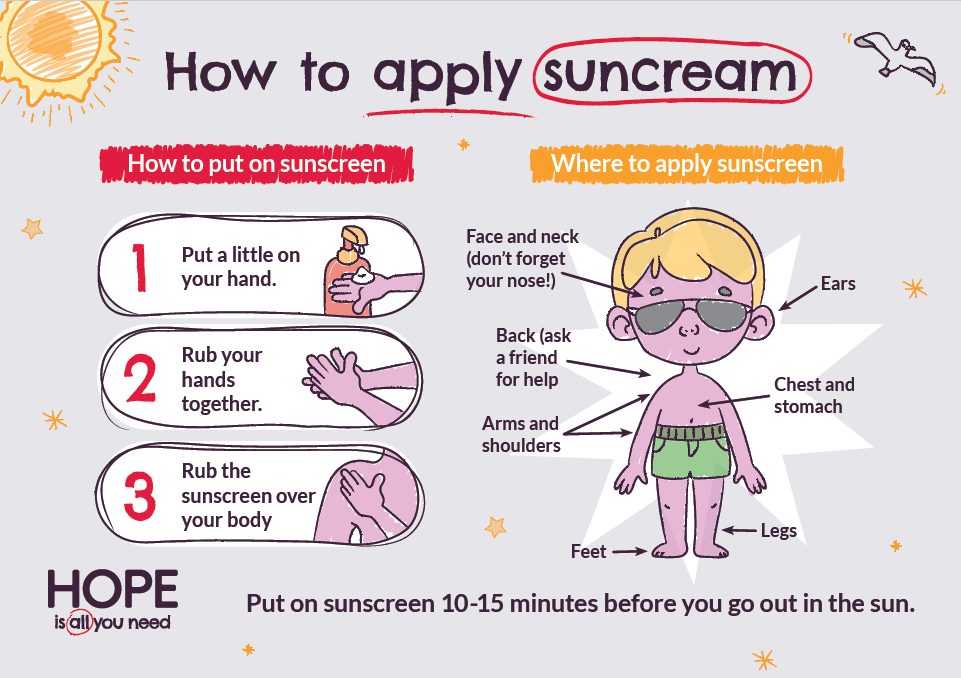UV protection: Sun safety for kids
As the weather changes, it is important for teachers to make sure that children stay safe in the sun as well as themselves. It is easy to forget how damaging the sun can be, but children need to be constantly protected throughout the school day as their skin is sensitive. To help you understand the dangers and know how best to protect children, we have created a guide on sun safety for kids.
Why is sunscreen important?
Sunscreen is vital for everyone, especially children, as it protects your skin in many different ways. The most important aspect sunscreen has is that it reduces the risk of skin cancer. To minimise this risk, apply a minimum of SPF 30 sunscreen multiple times a day in the spring and summer months. It is even important to apply sunscreen to the key areas of your body (such as face and hands) during autumn and winter even if it’s not sunny.
Another key aspect of protection sunscreen helps with is sunburn. It can be very easy for children to get sunburnt when spending long amounts of time outdoors. This is increased when they have no UV protection on. Getting consistently sunburnt can lead to skin damage which may worsen when pupils grow older.
Sunscreen is also great for reducing inflammation and preventing skin discolouration and ageing. Without UV protection, you can get sunspots and painful redness and inflammation that are uncomfortable to deal with.
Sunscreen tips
Make sure that there is plenty of sunscreen available for your pupils to use in your classroom. Even if the weather isn’t particularly sunny, sunscreen will still be needed. Having a large bulk in your classroom ensures every pupil has the chance to be protected.
When purchasing sunscreen, it is important to have an SPF of at least 30 and a 4-star UVA protection. Before using, make sure that it’s not past its expiry date either.
Applying suncream has to be done correctly to be effective especially for children. If you apply it too thin, then the amount of protection decreases. When out in the sun for a long period of time where pupils could burn, apply sunscreen regularly. Generally, apply sunscreen 30 minutes before going out and if it’s for a long time, just before going outside as well.
Apply to exposed skin including face, neck, backs of hands and ears. Ensure to top children’s sunscreen up every two hours as the sun can dry it off their skin, or sweating can rub it off.
Sunscreen advice free downloadable poster
Sun safety for kids is essential to get right but can be quite difficult for teachers to implement. With many pupils to oversee at once, it can be hard to know if they are applying sunscreen correctly. And as you are one person, it is impossible to help every child with their application.
To help children understand applying sunscreen correctly, we have created this downloadable poster for a visual guide they can follow. Print this poster out and display in the classroom where children can see and follow. Having this visual guide near your sunscreen station will help your pupils remember the key areas before they go outside. Download this poster here to help children with being protected from the sun.
Sun safety tips
Being safe in the sun prevents damaging skin. Share these safety tips with your pupils to make sure that they are aware of what they need to do to be safe.
- Make sure to spend time in the shade when the sun is strongest (between 11am-3pm)
- Never burn
- Cover up with suitable clothing and wear sunglasses
- Use factor 50 for children’s skin
- Wear a cap to prevent burning the scalp
Children’s skin is much more sensitive than adults and constant sun exposure without UV protection could lead to skin cancer later on in life. During spring and summer (March-October) children should be covered up with suitable clothing to minimise the amount of skin exposed to the sun.
If children need to spend time outdoors during the school day, then sunscreen should be provided. Make sure to have some spare caps and sunglasses in case a child forgets to bring them. Doing this allows every pupil in your class to be fully protected when heading outdoors. To further assist your pupils, have our skin safety board on show for children to understand UV levels.
How to soothe sunburn
If a child becomes sunburnt, it’s important to treat it and soothe it as soon as possible. Sponge the sore skin with cool water to soothe the sunburnt area. After this, make sure to use an after-sun gel or cream like aloe vera.
If a pupil complains that their sunburn is sore, painkillers like ibuprofen and paracetamol can help ease this pain. These medications reduce the inflammation caused by sunburn. It is always best to make sure the child stays out of the sun until the redness has gone.
If they feel unwell or the skin blisters or swells, seek medical help as soon as possible to combat bad sunburn.
Use this guide on sun safety for kids to keep them safe in the sun. Ensure you have the right resources in your classroom during the warmer months so that pupils can enjoy the weather without negative consequences. Use our downloadable poster and advice given to let children learn more about UV protection and sun safety. Show your pupils best practices too and assist them when needed.
